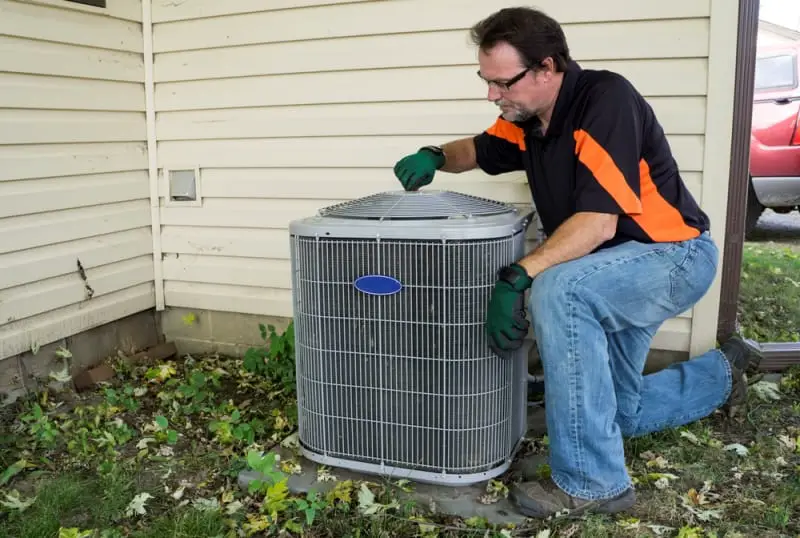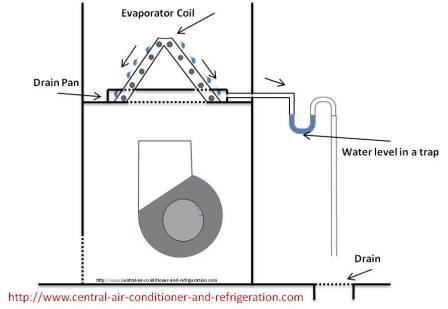

Use vinegar for preventative maintenance throughout the year. This will help kill mold, algae, and fungi before it has a chance of clogging your drain line. To help keep your condensate line clear, we recommend pouring a cup of vinegar down the drain line every couple of months. Regular maintenance for your HVAC unit will keep your condensate line from clogging in the first place.
AC DRAIN LINE DIAGRAM HOW TO
Either contact a professional or learn how to clear a drain line yourself. If water flows smoothly through the drain line, you can eliminate this. If the water begins to back up, you have a drain line clog. Insert a funnel and slowly pour a gallon of water down the drain.Find the PVC cleanout tee (small vertical section of the pipe) and unscrew the cap.Conduct a visual inspection of the entire drain line (indoors and out) to make sure it is properly draining outdoors. Inspect the condensate drain line (usually 3/4” white PVC pipe) for any cracks or damage.Locate your indoor air handler and look for the white PVC drain pipe coming from the unit and headed outdoors.We recommend cleaning the drain pan regularly to prevent clogged drain lines and curb mold and algae growth. Homeowners can successfully replace the auxiliary pan themselves, but a professional is required for replacing the permanent drain pan. While you may be able to use waterproof sealant to fix the leak, it’s probably better to just replace the drain pan. Solution: Check the condition of your drain pan for cracks and leaks. While you are able to remove, clean, fix, and replace the auxiliary pan, you will need to contact a professional for any work on the permanent one. It’s important to know that there are typically two different drain pans, one that is permanently affixed to the unit (below the evaporator coil) and other that is further below.

If there is any significant damage, contact an HVAC technician to replace the entire pan.
AC DRAIN LINE DIAGRAM CRACK
If the crack is small enough, you can use epoxy glue. It’s usually better to replace the entire drain pan rather than trying to fix it.

AC DRAIN LINE DIAGRAM CRACKED
It’s possible that your drain line is in perfect working order and it’s a cracked drain pan that’s causing the leak.Locate the indoor air handler and look for any evidence of water around the unit.Turn the central air conditioning on at the thermostat and allow it to run for 20-30 minutes.If it is beyond a simple repair, however, it’s best to contact a professional for replacement. Small holes and even cracks can be patched up with water sealant or epoxy glue. This condensation then flows into the PVC condensate drain pipe to be directed outdoors.īy using a flashlight and about a gallon of water, you’ll be able to locate and evaluate the condition of the overflow pan and PVC drain pipe. The overflow drain pan, located underneath your indoor evaporator coils, catches condensate that forms when warm air passes over cold evaporator coils. To prevent the common occurrence of system shutdowns and condensation leaks around your air conditioner, take some time to inspect the drain pan and condensate drain line. If your air conditioner won’t turn on, one of the first things you should check is the condensate drainage system. Some AC units have an overflow float switch that will turn the air conditioner off if it detects a condensate backup. Left unattended, the water will continue its downward trajectory through ceilings, walls, and floors. If water is pooling around your indoor air handler, you probably have an AC drainage problem. Unfortunately, sometimes condensate drain pans and lines can get damaged or clogged and cause quite a mess. Think of the water droplets that form on a cold drink in summer. When warm air passes over extremely cold evaporator coils, condensation forms and drips into a drain pan below.


 0 kommentar(er)
0 kommentar(er)
